Leadership & Management Final Exam Review PDF

| Title | Leadership & Management Final Exam Review |
|---|---|
| Author | Kassandra Hernandez |
| Course | Theory in Nursing |
| Institution | The University of Texas Health Science Center at San Antonio |
| Pages | 44 |
| File Size | 454.2 KB |
| File Type | |
| Total Downloads | 45 |
| Total Views | 133 |
Summary
Leadership Final Exam Review with Professor Richardson...
Description
Change and conflict - Change: making something different than it was o In many instance the outcome remains the same, but the process has changed o Living organisms must constantly adapt to the changes in their environment o Planned change is a process of intentional intervention - The changing healthcare environment: o Access to information has changed the relationship between patients and healthcare providers o Evidence based practice is changing the way HC treatments and how nursing care is delivered o Changing demographics within the population have resulted in diversity of cultures and languages o The aging of the baby boomers o The rising cost of HC services o The underinsured/noninsured o Patient safety - 4 systems are the focus of change: o Individual o Face to face groups o Organizations o Communities - Types of change: o Personal change: voluntary change with the goal of self-improvement o Professional change: deliberate change with the goal of improving professional ability/status o Organizational change: mandated change with the goal of improving the organizations efficiency Traditional change theories: o Lewins force-field model 3 step process Unfreezingo identification that the current process is flawed o Unthaw the current or old way of doing something o Opportunity, need or problem for which some action is necessary o May occur.. naturally as a progressive development or as a result from a deliberate activity as a first step in planning a change o Disrupts the old status quo o Gather data o Accurately diagnose the problem o Decide if change is needed o Make others aware of the need for change
Moving to a new level of behavior o Intervention or change is introduced, explained and implemented o Benefits, disadvantages discussed o New status quo o Develop plan, set goals/objectives o Identify support and resistance o Set hard target dates o Develop strategies, implement change o Evaluate change, modify if necessary Refreezing o Sustain new approach, stabilize change o New way incorporated/integrated into routine, habits o Acceptance occurs when staff integrate change into work process o Reinforce behavior essential o Positive feedback, encouragement and constructive criticism is important o Want change integrated into status quo Identify barriers: elements that hinder change, restraining forces Identify facilitators/driving forces: Elements that support change Effective change=driving forces > restraining forces o Lippitts phases of change- extended lewins 3 step change theory and made it a 7-step theory that focuses more on the role and responsibilite of the change agent than on the evolution of change itself. Information is continuously exchanged throughout the process 1. Diagnoses of the problem 2. Assessment of the motivation and capacity for change 3. Assessment of the change agent’s motivation and resources 4. The selection of progressive change objectives 5. Choosing an appropriate role for the change agent 6. Maintenance of the change once started 7. Termination of the helping relationship Key personnel and change agent participate in designing/planning the change Communication essential o Havelocks 6 step change model 1. Building a relationship- change agent creating a comfortable relationship with the client system 2. Diagnosing the problem- change agent investigates whether the client understands his own needs and problems.
-
3. Acquiring relevant resources- the problem has been clearly identified. At this point the acquisition of appropriate resources helpful in solving the solution are gathered 4. Choosing the solution- takes place once the client has learned to glean relevant information from the sources that have been gathered. While a range of solutions is identified, on the most appropriate will be chosen. During this stage that solution may need adaptation 5. Gaining acceptance (including communication)- change agent works on gaining acceptance of as many members of the client system as possible. Through various types of communication, the change agent will help clients improve awareness and interest, as well as evaluate and try out the solution 6. Stabilizing the innovation and generalizing self-renewal- change agent will continue to assist the client; the client learns how to maintain the innovation by serving as his own change agent. This leads to eventual separation of the former change agent and continuation of the innovation Emphasizes planning stage Resistance to change can be overcome with careful planning and staff inclusion Change agent encourages participation o Rogers diffusion of innovations theory- breaking this normal distribution into segments leads to the segregation of individuals into the following 5 categories of individual innovativeness (from earliest to latest adopters): Innovators- venturesome, educated, multiple info sources Early adopters- social leaders, popular, educated Early majority- deliberate, many informal social contacts Late majority- skeptical, traditional, lower SES Laggards-neighbors and friends are main sources of info, fear of debt o When the adoption curves is converted a cumulative percent curve a characteristic S is generated that represents the state of adoption of the innovation within the population. The rate of adoption of innovations is impacted by 5 factors: relative advantage, compatibility, triability, observability, and complexity o Change can be initially rejected and then adopted at a later time and vice versa o During implementation, change process take on own life o Careful management and planning essential to change process o Innovation better than status quo and compatible with existing values o Organizing communication channel to transmit innovative idea o Time required for spread of ideas o Social system can facilitate or impeded change Commonalities among the change models: o All the theories relate to the process of “unfreezing, moving, freezing”
-
o Many of the theories describe linear processes that move in step-by-step manner Differences: o Some theories don’t work well in complex nonlinear situations o Some theories work better for one type of change than the other
Emerging Theries of change: - A bit more complex - Respond to more complex situations than some traditional theories o Chaos theory- small differences in a dynamic system could trigger vast and often unsuspected results An early illustration of the butterfly effect “it’s a wonderful life” shows how if George wasn’t born it would detrimentally affect the lives of everyone Order emerges through fluctuation and chaos Process is cyclical Little time for orderly, linear change Organization must be able to act with speed, adaptability and intensity Leaders act quickly and are flexible o Learning organizational theory Learning organizations are organizations where people continually expand their capacity to create the results they truly desire.. where collective aspiration is set free, and where people are continually learning to see the whole together Emphasizes on interrelationships of all parts of the organization Respond quickly to improve relationships Organizations respond the changes using learning approach Focus on communication, education, and cooperation among all parts of organization Concept of continuous learning Mutual goals of individual and organization leads to: 1) quick response to chaos 2) positive results for organization and individual The change process: - Planned change in the work environment is similar to planned change on a personal level - Basic reasons to introduce change: o To solve a problem o Improve efficacy o Reduce the unnecessary workload - To plan change, one has to know what has to be changed - Driving forces…complete staff turnover, administration mandates change, need new solution, old one not working Process: - Assessment
-
-
-
-
o Identify the problem or the opportunity for change o Collect and analyze data o Data collection and analysis should come from different sources Structural (physical space or configuration) Technological (lack of wall outlets, poorly situated computer locations, lack of computers) People (commitment to staff, levels of education and interest in the project) o Restraining forces: forces acting to restrain or decrease the driving force. Behaviors/forces that impeded change by discouraging participants from making specified changes Planning o Identify the who, how, and when of change o Identify the target date o Goals and outcomes clearly determined and stated in measurable terms Implementation o Plan goes live o Provide information o Competency-based education o The benefits states as positive outcomes actually begin to materialize Evaluation o The effectiveness of the change is evaluated according to the outcomes identified during the planning and implementation steps o THE MOST OVERLOOKED STEP o Time intervals for evaluation should be identified and allowed to elapse before modifications and declarations of failure are asserted Stabilization of change
Response to change: the more the relationships or social mores are challenged, the more resistance to change - Factors affecting resistance to change: o Trust o The ability to cope with change o Evaluation of the immediate situation o Anticipated consequences of change o Individuals state in the change process - Lower work output and resistance initially - Normal event in the change process o Innovator: change embracer; enjoys the challenge, often leads to change o Early adopter: open and receptive, but not obsessed with change o Early majority: enjoy and prefer the status quo, but do not want to be left behind o Late majority: followers, often skeptics o Laggards: last group to adopt change, prefer tradition
o Rejectors: openly oppose and reject change -
Recipients of Change: o Believe change agent to give information and manage change o Trust change agent’s personal integrity o Identify inclusion concepts Ideas/concepts they belief are absolutely necessary for peace of mind/moral value When included, people feel ownership and value
-
The change agent: o Leads the change process o Manages the process and group dynamics o Understands the feelings of the group o Maintains momentum and enthusiasm o Maintains vision of change Change agent strategies: o Verbal and written updates o Checks rumors, upfront conflict o Know informal/formal leaders o Be confident and trust your decisions
-
-
-
Innovation: the process of creating new services or products Change and innovations are different o Change deals with any modification o Innovation is restricted to NEW modifications in ideas and practices Team develops new and innovative ways to solve problems Modify ideas and practice
The majority is different from early adopters so each group will need different messages and motivation to adopt an innovation. Innovators are not normal because most people are wary of change and they may not understand the majority view and thus are not good spread messengers. The majority are the people who hold organization together doing the day to day work. *involvement of senior leadership is essential for change to occur. Types of Change Strategies: 1. Power-coerciveo “do it or get out”; force use to change behavior o Based on power, authority, control o Little effort for employee participation o Little concern for employee acceptance/resistance o Resistance expected, but NOT important to authorities 2. Normative-reeducative-
o Focuses on the relationship needs of workers, peer pressure o Assumes employees are interested in preserving relationships o Assumes people respond to social norms and values 3. Rational-empiricalo Workers understand organizational need for change or meaning of change for individuals and organizations o People are rational and use knowledge to embrace change o Used when little resistance is expected o Change will result from giving information by using current date to support the change Conflict - Conflict: disagreement about something of importance to each person involved - Ability to resolve conflict is important part of change management - Conflict not bad; actually healthy - Allows for health discussion of differences - Conflict is needed to prevent stagnation, routine, allows new ideas - The larger the group, the greater the chance of conflict to occur Sources of conflict: - Differences in goals: most common cause of conflict - Difference in values: 2nd most common cause of conflict - Allocation/availability of resources - Personality differences: being attached to status quo, desire to create conflict - Internal/external pressures - Cultural differences - Issues of personal/professional control o Emotional base of individual - Miscommunication o Wrong assumption o Lack of information Conflict and bullying: Conflict: - Disagreement or argument in which both sides express their views - Equal power between those involved - Generally stop and change behavior when they realize it is hurting someone Bullying: - Goal is to hurt, harm or humiliate - Person bullying is in power (older, bigger, stronger or more popular) - Continue behavior when they realize it is hurting someone Types of conflict: - Intrapersonal: within the individual - Interpersonal: between 2 people/groups
-
Organizational/intergroup: identifies legitimate differences between departments, identifies area of improvement
The conflict process: - Antecedent conditions (latent): specific preexisting condition, unclear roles, compete for scarce resources, quest for autonomy, subunit with divergent goals - Perceived and/or felt conflict: cognition - Manifest behavior: visible evidence of conflict - Conflict resolution or suppression: leads to developing new attitudes/feelings - Resolution aftermath Approaches to conflict resolution: approaches to negotiation are influences by the importance of maintaining the relationship vs. the importance of achieving ones desired outcomes 1. Avoiding/ignore: a. Could be conscious or unconscious b. Most useful when a cool down period id needed regarding the issue c. However, If issue ultimately not addressed: decreases effectiveness of group problem solving, issue becomes “bigger” than anticipated d. Issues may be more important to person/group than to others 2. Accommodating: a. Cooperate; one side gives in b. Loose to win c. Low stakes, need to move forward 3. Compromising: a. Each side gives up something and gains something b. Splits the difference both parties win/lose 4. Collaborating: a. Both sides work together for optimal best solution/outcome; requires commitment to success b. Win-win: important goals for both/all parties accomplished c. Can be time consuming approach… but worth it! 5. Smoothing: a. Use used to manage a conflict situation b. Is more of a placating strategy c. Rarely reaches a reasonable outcome of the actual conflict 6. Negotiating: a. High level discussion with permanent solution b. Some wins, some losses c. Requires highly developed skills and careful communication i. Makes party feel satisfied with outcome d. Can not return to conflict i. Union contract, change policy 7. Confronting: immediate and obvious move to stop conflict a. Powerful
b. Conflict does not take root/issues clarified c. Leaves impression conflict not tolerated d. Can make something big out of nothing Roles of leaders and managers in conflict resolution: - Model conflict resolution behaviors - Lessen perceptual differences in parties - Assist parties to identify resolution techniques - Create environment conducive to conflict resolution - If conflict cannot be resolved, minimize/lessen perceptions of conflicting parties
-
-
-
Organizational structure Mission statement: a formal expression of the purpose or reason for existence of the organization o We the people Philosophy: a value statement of the principles and beliefs that direct the organizations behavior o Ex: might be “only use fresh ingredients” or “be environmentally responsible” Values: may be formally stated and explicit, or may be implicit and part of the organizational culture
Strategic planning: - A strategic plan is: the sum total or outcome of the processes by which an organization engages in… o Environmental analysis o Goal formulation o Strategy development with the purpose of organizational growth and renewal - Provides unified vision and goals for the organization - Helps ensure that the needed resources are available to carry initiatives out Steps in the SPP: 1. Perform environmental assessment o A situational assessment requiring a broad view of the organization’s current environment o An external assessment: is broadly based and attempts to view trends and future issues and needs that could impact the organization o An internal assessment: seeks to inventory the orgs assets and liabilities o SWOT analysis: tool for conducting environmental assessments Strengths Weaknesses Opportunities Threats 2. Conduct stakeholder analysis o A stakeholder is any person, group, or org that has vested interest in the program or project under review o A systematic consideration of all potential stakeholders to ensure that the needs of each of these stakeholders are incorporated in the planning phase
o WARNING: when stakeholders are not involved in the project planning, they do not get a sense of ownership o Other examples of assessment: Surveys/questionnaires: used when a large # of stakeholders and general ideas of the options available Focus groups/interviews: Focus groups: small groups of individuals with a common characteristic who meet in a group and respond to questions about a topic Time-consuming and expensive Works best when the topic is broad and the options are not as clear Advisory board: benefits large projects, board members come from various constituencies affected by the project Has no formal authority, but reviews plan and makes recommendations 3. Review literature for evidence-based best practices o Should be completed prior to strategic planning or beginning any new project o Allows project team to identify similar programs, their structures and organization, potential problems, pitfalls and successes o Ongoing process 4. Determine congruence with organizational mission 5. Identify planning goals and objectives 6. Estimate resources required for planning o Identify best practices or EB innovations that have been adopted with success by other orgs o Nurses planning to develop a new program need to carefully examine existing evidence and practices prior to beginning the planning 7. Prioritize according to available resources 8. Identify timelines and responsibilities 9. Develop marketing plan 10.Write and communicate business plan/strategic plan 11.Evaluation o Planning and objectives Prioritize according to strategic importance, resources required, and time and effort involved Set timeline o Develop marketing plan Communicate plan, the goals and objectives Design, implement, train and evaluate the new program Assures that all stakeholders have needed info Organizational Structure:
Orgs are structures or organized to: o Facilitate the execution of their mission o Strategic plans o Reporting lines o Communication within the org - Functions on a continuum w/levels of authority Types of org structures: - Communication by the use of organizational chart - Types: o Matrix: large dept with different skills sets and outputs o Flat vs Tall Tall: CEO-boss, levels Flat: this works well for Y cohort-self-directed Cross talk, but director will provide oversight but everyone works together and does it how they want The way this chart works is if each little project is completely uncoupled from all other projects More employee autonomy o Decentralized vs centralized Centralized: the policies generate from the mothership Most things come from one central hub for policy and procedure (ex: VA) Decentralized: all within the same organization ...
Similar Free PDFs

Sports Management Final Review
- 5 Pages

Leadership& Management
- 5 Pages

Leadership & Management
- 77 Pages

Management & leadership
- 9 Pages

Chem Final Exam Review
- 12 Pages

Final Exam - Review notes
- 92 Pages

Bio Final Exam Review
- 2 Pages

Final EXAM Review booklet
- 5 Pages
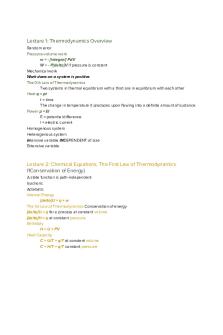
CHEM303 final exam review
- 4 Pages

Psychology Final Exam - Review
- 13 Pages
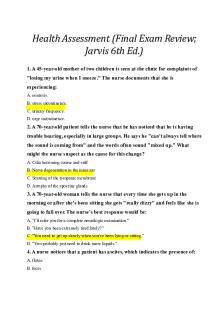
Jarvis Final Exam Review
- 12 Pages
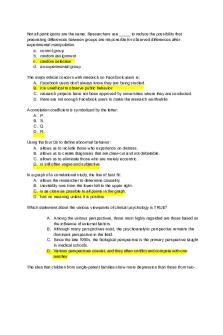
Final exam review
- 96 Pages
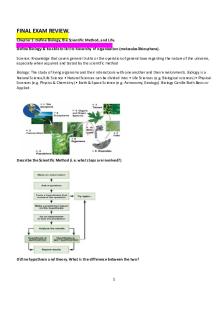
Final Exam Review
- 48 Pages
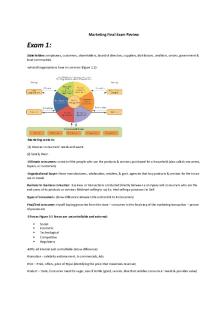
Marketing Final Exam Review
- 15 Pages
Popular Institutions
- Tinajero National High School - Annex
- Politeknik Caltex Riau
- Yokohama City University
- SGT University
- University of Al-Qadisiyah
- Divine Word College of Vigan
- Techniek College Rotterdam
- Universidade de Santiago
- Universiti Teknologi MARA Cawangan Johor Kampus Pasir Gudang
- Poltekkes Kemenkes Yogyakarta
- Baguio City National High School
- Colegio san marcos
- preparatoria uno
- Centro de Bachillerato Tecnológico Industrial y de Servicios No. 107
- Dalian Maritime University
- Quang Trung Secondary School
- Colegio Tecnológico en Informática
- Corporación Regional de Educación Superior
- Grupo CEDVA
- Dar Al Uloom University
- Centro de Estudios Preuniversitarios de la Universidad Nacional de Ingeniería
- 上智大学
- Aakash International School, Nuna Majara
- San Felipe Neri Catholic School
- Kang Chiao International School - New Taipei City
- Misamis Occidental National High School
- Institución Educativa Escuela Normal Juan Ladrilleros
- Kolehiyo ng Pantukan
- Batanes State College
- Instituto Continental
- Sekolah Menengah Kejuruan Kesehatan Kaltara (Tarakan)
- Colegio de La Inmaculada Concepcion - Cebu

